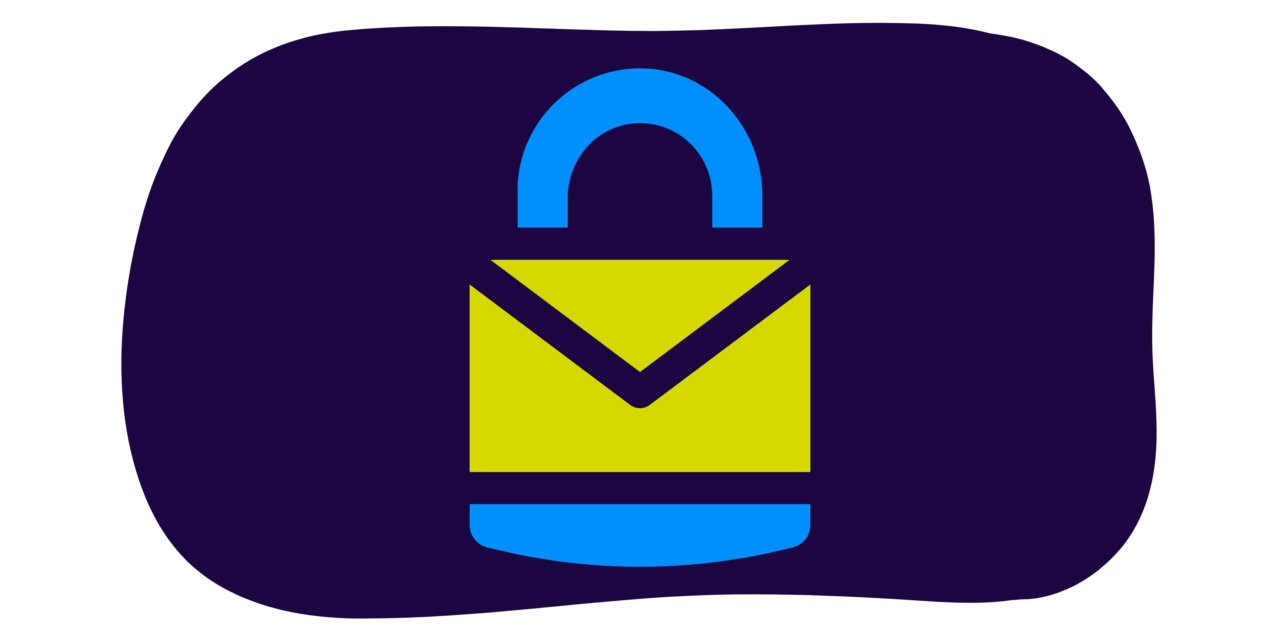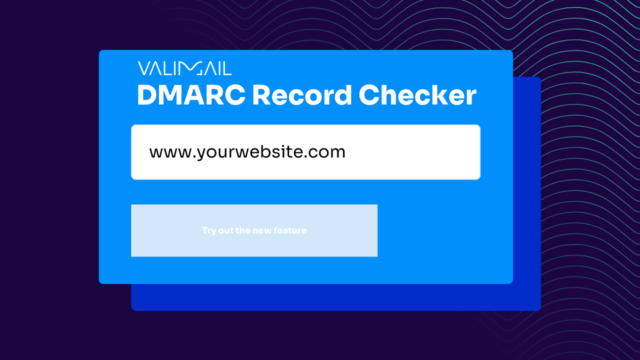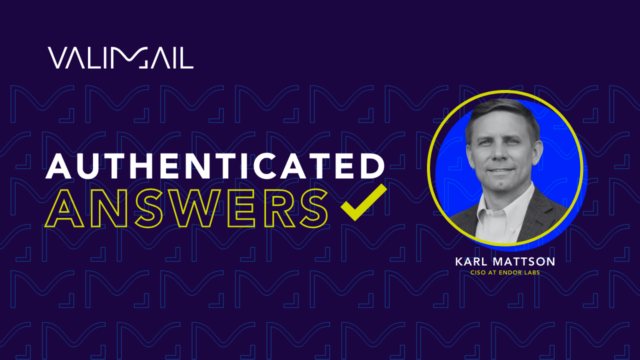Despite the emergence of brand-new social media networks and messaging applications, email still remains a primary communication for businesses and consumers worldwide. From internal company memos to two-factor authentication to marketing messages, email is prevalent and universal.
However, with its widespread use comes many potential threats, making email protection a must-have for businesses and consumers alike. While terms like “email cybersecurity” and “email authentication” are often used interchangeably, they address distinct aspects of email protection.
Understanding the nuances between them isn’t just a matter of semantics—it’s critical for implementing and maintaining comprehensive email security.
Below, we’ll explain the core differences between email cybersecurity and authentication, giving you the solutions and know-how you need to safeguard your business communications.
What is email cybersecurity?
Email cybersecurity is the comprehensive practice of safeguarding email accounts and their content. It’s about ensuring the emails you send and receive are both genuine and harmless and that unauthorized entities can’t access or manipulate them.
Here are a few common components of email cybersecurity:
- Malware Protection: This involves scanning emails for malicious software that can harm your computer or network. Any attachments or links within emails are scrutinized to guarantee they’re free from viruses, worms, or other harmful software.
- Spam Filters: Not all unwanted emails are harmless. Spam filters work to keep unsolicited emails (which sometimes might be phishing attempts or malware attacks) out of the primary inbox.
- Phishing Detection: Cybercriminals often impersonate trustworthy entities to deceive recipients into revealing sensitive information. Phishing detection tools analyze emails for these deceptive tactics and flag them.
- Secure Email Gateways (SEGs): These are the gatekeepers of your email traffic. They prevent malicious emails from entering and sensitive information from leaving your network, ensuring a two-way protection mechanism.
However, there are constantly changing threats that make it impossible to create one-and-done email cybersecurity protocols and best practices. Here are a few of the prevalent challenges in today’s dynamic landscape:
- Spear Phishing: Unlike generic phishing attempts, spear phishing targets specific individuals or organizations. Cybercriminals customize their deceptive emails based on research, making them harder to detect.
- Ransomware: A malicious software that encrypts a victim’s files. Ransomware attacks often start with an innocent-looking email. The attacker then demands a ransom from the victim to restore access to the data.
- Business Email Compromise (BEC): In these sophisticated scams, attackers impersonate executives or other high-ranking officials in an organization, tricking employees into transferring money or revealing sensitive information.
However, email cybersecurity alone isn’t always enough. These growing and evolving threats can sometimes bypass cybersecurity measures and compromise your business, which is why you also need email authentication.
What is email authentication?
Email authentication is the systematic process of validating the legitimacy of an email’s origins. It’s a digital handshake between email servers to ensure that the email received is genuinely from the sender it claims to be from.
Several protocols have been developed to facilitate email authentication, each serving a unique purpose:
- Sender Policy Framework (SPF): SPF allows domain owners to specify which email servers can send emails on their behalf. When an email is received, the receiving server checks the SPF record of the sending domain to determine its legitimacy.
- DomainKeys Identified Mail (DKIM): DKIM adds a digital signature to the headers of outgoing emails. This signature is verified against a public cryptographic key in the domain’s DNS records, confirming the email’s integrity and authenticity.
- Domain-based Message Authentication, Reporting, and Conformance (DMARC): Building upon SPF and DKIM, DMARC provides domain owners with a mechanism to define a policy on handling emails that fail authentication checks. Additionally, it offers reporting capabilities, allowing domain owners to receive feedback on the authentication status of emails sent from their domain.
These email authentication standards provide plenty of advantages to businesses and consumers:
- Sender Credibility: By authenticating your emails, you assure recipients that the email genuinely originates from your domain, bolstering trust and credibility.
- Enhanced Email Deliverability: ISPs and email providers trust authenticated emails more, ensuring that your legitimate emails land in the recipient’s inbox rather than the spam folder.
- Protection Against Phishing: By validating the origin of emails, authentication protocols make it significantly harder for cybercriminals to impersonate your domain, safeguarding your brand and recipients from deceptive phishing attempts.
Are you curious how your email program currently performs? Check if DMARC is properly configured on your domains (to prevent impersonations and increase deliverability) with our free-to-use Domain Checker.
Email cybersecurity vs. email authentication: Key differences
We wouldn’t call email cybersecurity and email authentication standards best practices—instead, we’d call them must-have necessities. Each serves a unique role in protecting your business and its customers, and here’s how each does it differently.
Scope
Email Cybersecurity: This encompasses a broad spectrum of protective measures designed to shield email accounts, content, and communication from a wide array of threats, ranging from malware to data breaches.
Email Authentication: This is a more specialized area, zeroing in on the validation of email origins. Its primary goal is to prevent malicious actors from impersonating trusted entities, thereby hindering email spoofing and phishing attempts.
Solutions and techniques
Email Cybersecurity: The tools here are diverse, reflecting the wide range of threats they combat. Secure email gateways, malware scanners, and spam filters are just a few examples. These tools work together to confirm that emails are genuine and free from harmful content.
Email Authentication: This area leverages specific protocols and reporting software to validate email origins. DMARC is a prime example, giving domain owners feedback on the authentication status of emails sent from their domain. Other protocols like SPF and DKIM also play pivotal roles in the authentication process.
End goals
Email Cybersecurity: The overarching aim here is holistic protection. By safeguarding email content, accounts, and communication channels, cybersecurity helps keep sensitive information confidential and email systems resilient against diverse threats.
Email Authentication: The primary goal is trust. By validating the legitimacy of email senders, authentication protocols help recipients trust the source of their emails. This strengthens sender credibility and protects brands and recipients from deceptive phishing attacks.
The best solution is to work with an SEG and a DMARC expert. Each addresses a different use case, and we believe both are important, which is why Valimail partners with companies like Abnormal and Microsoft. While our zero-trust authentication complements the SEG solutions, we uniquely stop outbound phishing attacks.
Why understanding the difference is important
Remember, we’re not discussing cybersecurity and authentication standards for semantic purposes—we’re trying to help you see the big picture so that you can gain and maintain comprehensive email protection for your business.
Holistic protection
Recognizing the distinct functions of email cybersecurity and email authentication is the first step toward achieving a well-rounded email protection strategy. While cybersecurity shields your email content and accounts from a myriad of threats, authentication validates the legitimacy of email senders.
Together, they form a formidable defense to guarantee the content and origin of emails are secure and trustworthy.
Resource allocation
By distinguishing between the two, your organization can better allocate resources—be it time, money, or workforce—more judiciously. This helps you budget adequately for both cybersecurity measures and the implementation of authentication protocols.
Trust and reputation
Trust is your brand’s most valuable asset. Cyberattacks (especially those that exploit email vulnerabilities) erode trust in a heartbeat. Together, these methods bolster your business’s reputation, signaling to customers that their data and trust are held in the highest regard.
Protect your business and customers with email authentication
While email cybersecurity and email authentication are two sides of the same coin, understanding their distinct roles and significance is the key to building a robust and holistic email protection strategy.
Ready to get started with email authentication solutions for your business? Valimail offers streamlined products to solve these challenges. We provide solutions to automate your DMARC and Brand Indicators for Message Identification (BIMI), helping decrease spoofing and phishing, boost deliverability, and improve the inbox experience.
Want to learn how automated email authentication can help you?



